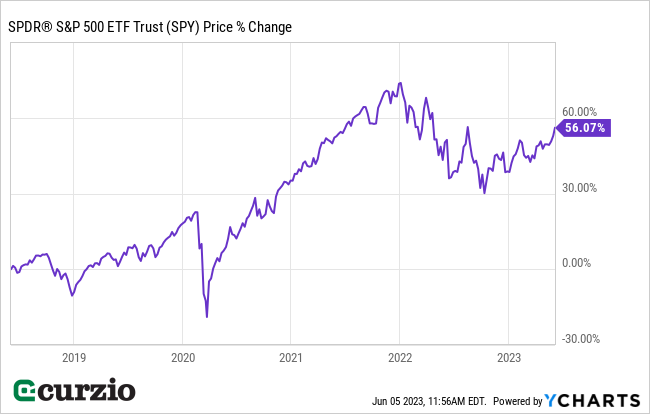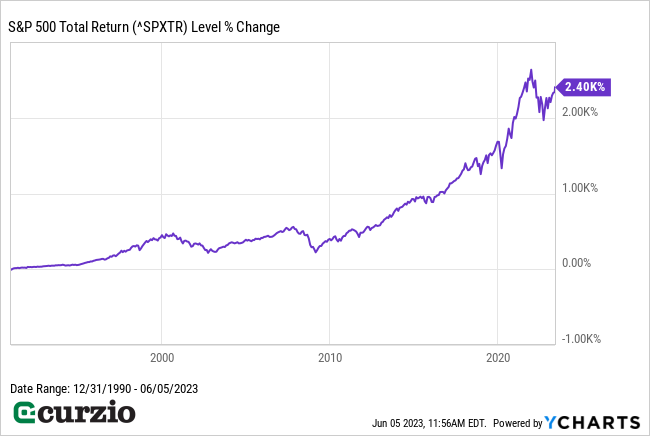Make Sure You're Using This Underappreciated Investment Vehicle
Forty-five years ago, President Jimmy Carter signed the Revenue Act of 1978.
The act was designed to reduce the tax burden on individuals and corporations by widening the tax brackets… reducing taxes on capital gains… and introducing flexible spending accounts.
But the biggest game-changer for long-term investors came from an obscure provision buried within the new law…
This change to the tax code allowed employees to defer income taxes on a portion of their salaries… as long as that money was invested in the stock market.
A couple of years later, a benefits manager named Ted Benna figured out how to use the new law to set up a retirement plan for his employer, the Johnson Companies.
And with Benna’s innovation, the 401(k) was born… revolutionizing the investment landscape for Main Street investors.
It might be hard to believe this investment vehicle is only a few decades old, considering how ubiquitous it’s become. These days, a 401(k) is an expected component of any benefits package when you accept a full-time job.
In short, the 401(k) plan is one of the greatest inventions of all time for average folks. It offers a ton of advantages to help avoid taxes and simplify the investing process.
With a simple payroll withholding, a percentage of your paycheck is placed in a tax-deferred account, which is then invested. You don’t have to think about it—it comes out of your income automatically, regardless of market rallies, selloffs, or alarming headlines (like the recent debt ceiling standoff).
Even better, 401(k) plans often come with matching employer contributions. In other words, many companies will match your contribution up to a certain percentage of your salary. For the average worker, this is essentially “free money”… that’s set to grow substantially over time.
And because 401(k)s are tax-deferred, you’re not taxed on capital gains or dividends until you start withdrawing funds.
Aside from the huge tax benefits, 401(k)s come with a built-in feature that’s essentially a form of automatic dollar-cost averaging (DCA).
I’ve written about DCA before. It’s a very simple strategy: You buy selected assets (stocks, ETFs, or mutual funds) on a set schedule.
A 401(k) helps make sure you invest a little bit every two weeks (or every month—depending on how often you get paid)… gradually and consistently contributing to your nest egg—regardless of what’s going on in the markets.
While the dollar amount stays the same, the number of shares you buy changes… depending on the price.
So when stock prices are down, you’ll automatically buy more shares. And when the market is up, you’ll purchase fewer shares. This fixed-contribution process helps you avoid over-investing near a market peak… and underinvesting near the bottom.
Put simply, DCA takes advantage of any market conditions… and sets you up for long-term profits.
Plus, investing on a set schedule forces you to stay disciplined. This might sound boring, but it’s actually a critical component of successful investing…
It’s easy to get caught up in the emotional swings that happen during market cycles (or even from watching the daily news). When the market is falling, investors’ first impulse is often to run to the sidelines (by either pausing their buying or selling their holdings). On the flip side, they tend to get overly excited when the market is rising… and end up over-buying.
Sticking to a set investing schedule allows investors to avoid the mistakes that result from making emotional decisions.
And dollar-cost averaging is especially valuable during periods of extreme market volatility, like today. DCA helps you keep your emotions out of your investment decisions—and minimizes the desire to “time the market” or guess at the next big move in stocks.
By avoiding the mistakes that come from emotional decisions, you’ll set yourself up to benefit from the most important truth in investing: Over time, stocks tend to move higher—especially as the economy grows and corporate profits rise.
For example, over the past five years—a period that includes two major bear markets—the S&P 500 (ARCA:SPY) has risen more than 50%.
And the sooner you start investing, the better…
As you can see on the chart below, over the past 33 years (which is still shorter than the standard career lifespan), the S&P 500 has returned more than 2,300%.
The bottom line: If your employer offers a 401(k) and you’re not utilizing it, you’re missing out on one of the surest—and simplest—ways to build your nest egg. These vehicles keep you in the market regardless of your near-term outlook (or knee-jerk emotional reactions)… allowing you to steadily build your wealth over time.
In short, utilizing your 401(k) is a great way to stay disciplined in any market… and set yourself up for massive long-term gains.
This article was submitted by an external contributor and may not represent the views and opinions of Benzinga.
© 2025 Benzinga.com. Benzinga does not provide investment advice. All rights reserved.
Posted-In: 401(k) contributors retirementMarkets Personal Finance General





